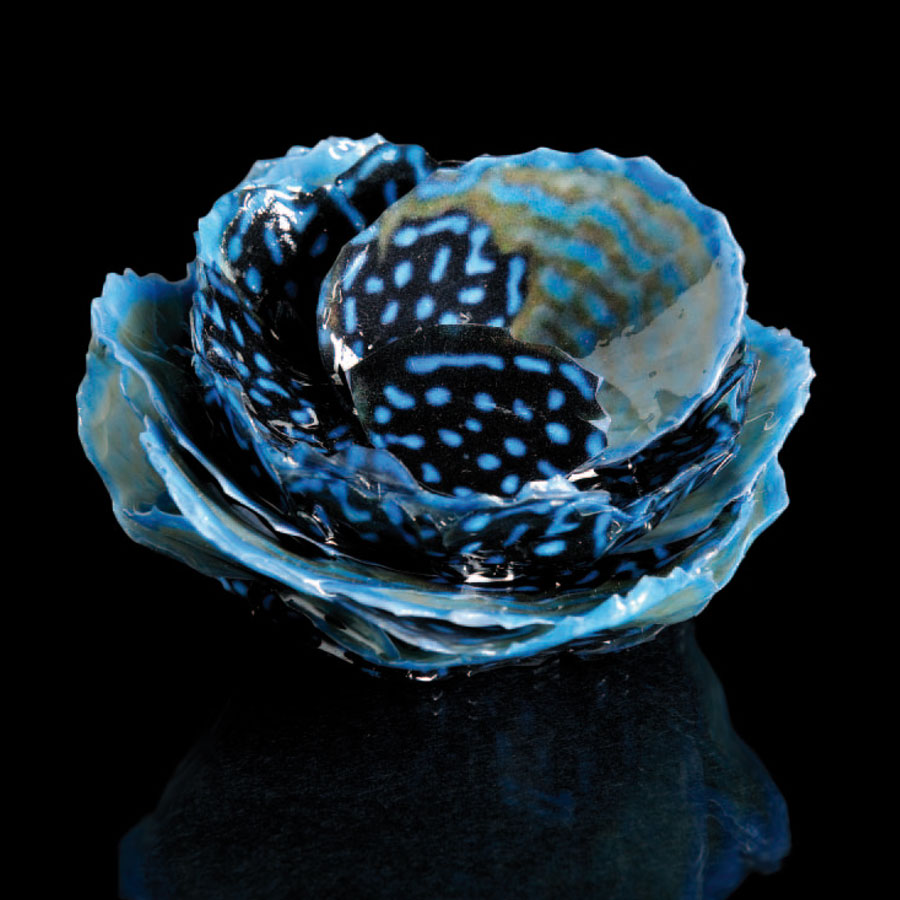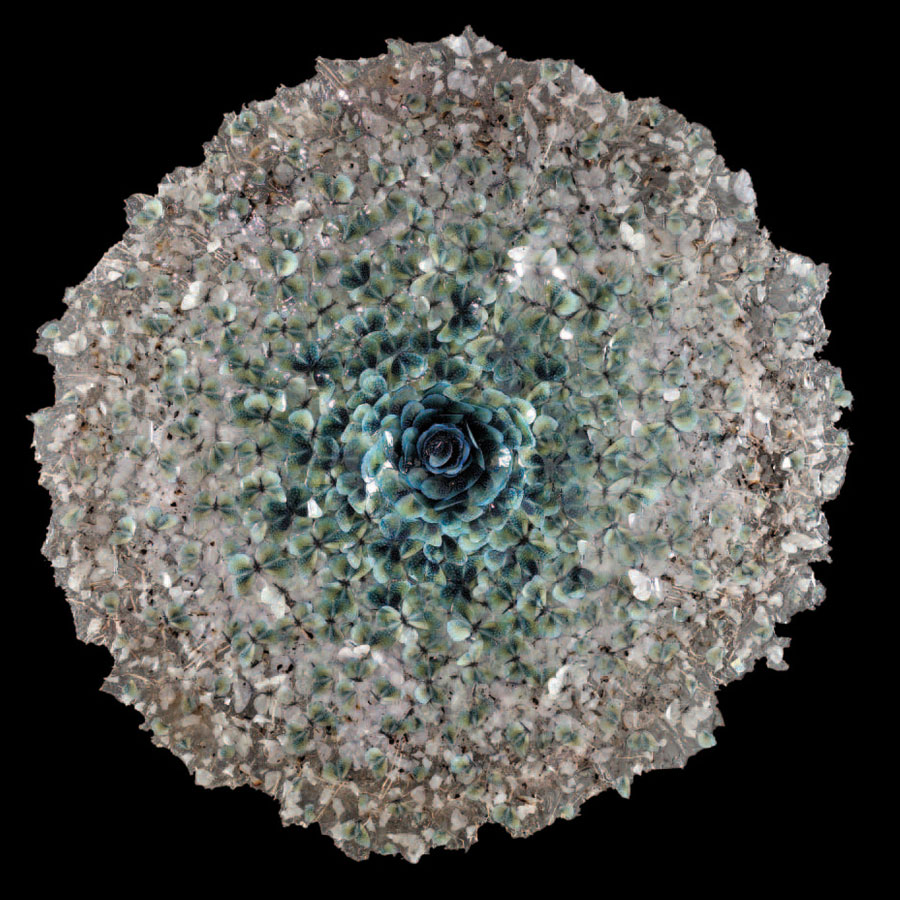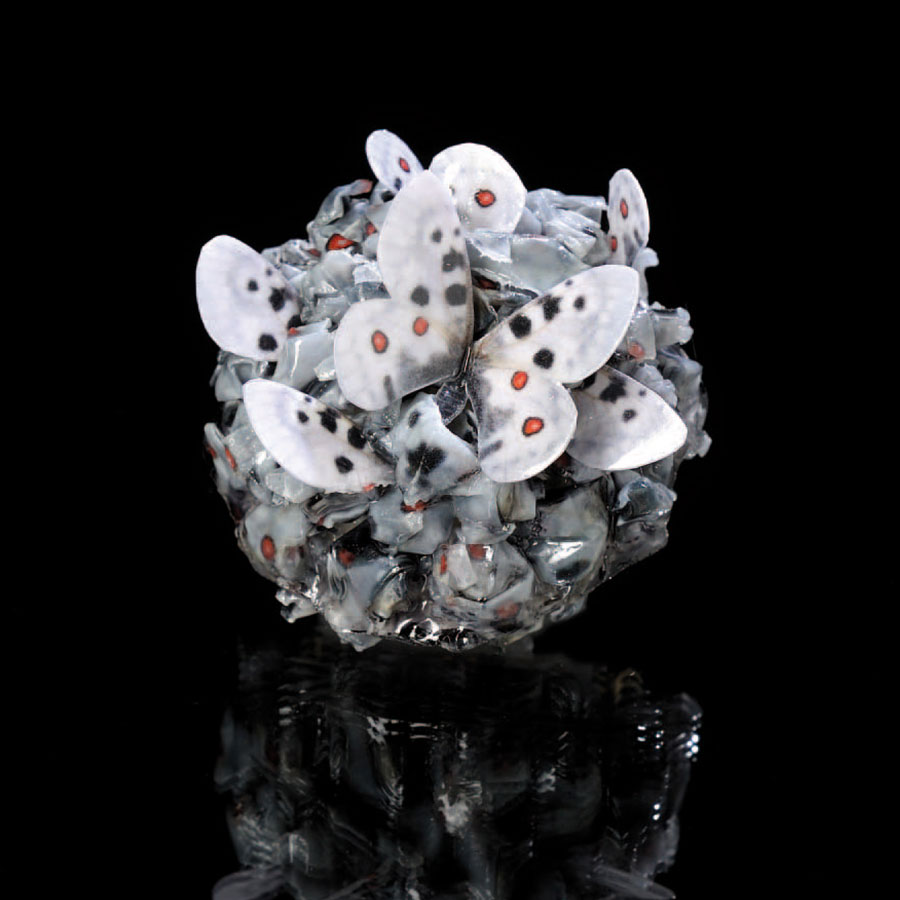BY DANIELA DEL MORO (2011)Alchemy is lightness

“Annalù perhaps manages to simplify this ancestral concept of time. In its attempts to stop its flow in the resin.
“He had that moment
the certainty of a change,
in the perception of the atmosphere, perhaps,
or in the breath of things “
(M. Tournier)
In the last text written for Annalù, now three years ago, I closed leaving the artists who like you have the rare gift of “lightness” (Calvinian), the task and the duty to help us “fly an Angel”, or an attempt evolutionary so that art returns to the sense of history, to the healthy education of Beauty, to the sensitive and rediscovery of “silences”.
In the face of the quality of her work today, it can be noted that the young artist from S. Donà del Piave has never stopped looking for that elsewhere, that complexity of relationships and situations of life which, alongside an impressive mastery of the realization techniques, bring the viewer to a vision that captures and holds the breath in the resonance of forms, matter and new sharing of “beats”.
The instant and the memory never cease to meet in his work, such as literature, poetry, the charm of the great philosophers, literary stories, rhythmic cadences, the voice and heart of the highest spirituality, omens and remembrances.
Removing the voice (perhaps unconsciously) from his scattered “park” of working tools, the artist made them sing “eddies” and transparencies: investing them in the past, he made them resonate with presences.
It began with a “Message received”, an installation work in iron, paper, and resin with “cast of his body” (in 2000), this path as an equilibrist perpetually traveling on a transparent rope, tied to life by feathers and leaves ; it started like this, with a message that whispered, then, his tenacity, his light but profound presence, certainly much more than his Piave that still flows through his veins, and has continued over the years on itineraries of millenary maps that moved body and lie on a small paper boat, with glass oars and an improbable sail of roots and intertwined leaves…



A little Marco Polo, the soul of Annalù, that of Italo Calvino’s “invisible cities”, which he told a tired and disappointed interlocutor, Kublai Kan, grandson of the great leader Genghis Kan, of many cities visited in his embassies, all with names of women, cities that have fascinated Anna too, because they are inspired from time to time – like I his works – to memory, desire, dreams, signs, eyes and sky; are cities like Valdrada, which not surprisingly gives the title to one of his beautiful sculptures, cities that are born on the shores of a lake: “(…) with houses all verandas one above the other and high streets overlooking the the balustrade railings. Thus the traveler sees two cities arriving: one straight above the lake and one reflected upside down (…) and his mirror image, to which the special dignity of the images belongs, this awareness of them, forbids abandoning oneself to chance and to oblivion (…) the mirror now increases the value of things, now denies it “. Cities and stories described to offer ideas and reflections, just as each Annalù’s work naturally attempts a deep and intimate dialogue both in the overall vision and in the reasoned titles. A time traveler, a little Marco Polo then and a little Qeen Mab, the queen “midwife of the Fairies” of Shakespeare, in the suggestive story where Mercutio, the lightest and most passionate soul of the rival Romeo, explains his philosophy in the description of a dream: “The Queen appears on a hazelnut shell, long spider legs are the spokes of her wheels; d ‘elitre of grasshopper is the bellows; of spider web of the thinnest harnesses; pectoral moon rays burn; whip handle a cricket bone; lashes a thread without end: (…) and is scarrozzata of a crew of impalpable atoms. “
A delicate sensation of lightness and breath therefore, never separated from a desire for precision and determination, this is the picture that I would like to give of Annalù. Precision and determination, never vagueness or abandonment to chance, love for nature in all its forms, heart and eyes of a child in savoring each new experiment. Over the years of frequenting his artist soul, this has always been a constant path of expressive will and study: many calls and meetings for constructive confrontations and free thoughts. Here is what I love and admire about Annalù, her absolute freedom of mind and heart, her inability to stop the flow of thoughts, the healthy and intelligent curiosity that always puts everything in question, her past so present in the relationship with the family and the truest affections, his serenity next to Marco – sensitive man and poet of living – his transparency and his giving himself without reservations, his laying bare in front of his works to give them to you, not just to let you observe them …
So we come to a more mature work today, where the elements and techniques that have accompanied it over the years have taken on new shapes and thickness. From that “Message received”, we have received so much and so much sharing of emotions: from the impalpability of the feathers with a melancholy and conscious Icarus, to the sudden flights of fields of butterflies, to the books stolen from Queen Mab with pages of water and letters dissolved in impossible sentences, up to the new great Mandalas for the four elements that carry even further than Annalù’s message.
To better understand this further, it is necessary to go a little back in time, to when Anna and I spoke of “Gutta cavat lapidem” one of her most suggestive and difficult last works, in terms of technique and conceptual dimension and how this work, unconsciously, should give birth to others: that sense of depth, that spiral of petals and wings that generated a bottomless vortex, deliberately swallowed eyes and reality.
But the virtual introflexion was intended for other attempts at extroflexion…
Indeed, its petals, its wings, now had to make a transformation, to transform themselves into the remembrance of distant times: “there is a water that sleeps at the bottom of every memory” (Bachelard), fresh and deep, cold and rich in fish and strange beings with colorful scales, a mutation that becomes foreboding, scales that turn into light ribs, a new time of freedom, unexpected flights for a life that comes from water to air, trying transformations into new breaths. This is how Annalù conceived her great Mandalas, inspired by the four elements – which now belong to her – where her petals are incessant mutations and become flakes and wings gathered in concentric eddies for implosions or explosions that still converge the gaze at the center. And right there he released his new expressive research: in an attempt to physically “give himself” to the viewer.
Its centers are now small sculptures to touch, detach from the painting and wear: the concept of “jewel” exists but is exceeded both in the preciousness of the subject, but above all in making the user become an integral part of the work, or even better to share a small part of yourself with the artist. Wearing a work is an operation as innovative as it is suggestive for emotion and sharing: bringing the center of a painting that awaits you at home, to return a complete work of its “heart”, is giving new shape to “time” in its best condition than expected.
We all learn to talk about the weather, but when someone suddenly asks us what it is, it leaves us puzzled with an amazement equal to what St. Augustine felt over fifteen centuries ago asking the same question: “What is time then? ? If nobody questions me, I know; if I wanted to explain it to whoever asks me, I don’t know. “
So time in the language of philosophy belongs to the unspeakable and invisible. It is something that is offered to the view and that at the same time escapes it and that can be grasped in its essence only by looking through what appears to us, placing itself on the limit between what is and what is not. It may seem complicated, but Annalù perhaps manages to simplify this ancestral concept of time. In its attempts to stop its flow in the “resin”: a leaf can not die if crystallized in its form, the water itself takes the form of a page and as the wave only moves the flow of a story or the secret memory of a diary, a butterfly will boast forever its impalpable beauty in the wings that perhaps still attempt flights.
This places the observer precisely between what is and what could not be…
So we learn that the passage of time is actually relative, in the expressive choices of an artist who loves to reflect and not his reflection, loves equilibrium and not the certainty of a balance, the time of respect and not the due respect of the time, the transparency of Art and not only the art of transparency, always and in any case in love for others, for freedom and for the flow of a thought.
Today is the time of the ephemeral, of the sparkling appearance, of wanting to seem rather than wanting to be, of letting oneself live instead of wanting to live, all this always at the expense of the quality that has never married well neither to haste, nor to speed and superficiality.
Here then an exhibition like “Reverie” that speaks to us of a time suspended between reality and perception of it, between imagination and dream, is a dutiful tribute to respect for the culture of other times that should return more ours: the times of observing with attention, to see to dedicate moments of sharing thoughts and lightness. That “reverie” that pays homage to and marries the “lightness” already mentioned by Italo Calvino, as light as it is profound in its thickness and philosophy of life.
Milan Kundera has written memorable pages about the question of time and its life: “Shaping a duration is the need for beauty, but it is also that of memory. There is a secret link between slowness and memory, between speed and forgetfulness. In existential mathematics this experience takes the form of two elementary equations: the degree of slowness is directly proportional to the intensity of memory; the degree of speed is directly proportional to the intensity of oblivion “.
And it is with this tenacious utopia of memory and timelessness that Annalù continues his incessant research and dedicates his energy, in a passionate work, without surrender, in the face of the precariousness of the myths that mark the contemporary: the Elsewhere of art for her, it is obstinately the space capable of freeing the existing from its “opaque” reality: it happens then to reconnect the fragments, to imagine the absolute inventing perceptions, looks, visions beyond and through what life gives us or gives us he gave; then the work becomes a threshold which, through the veil of its “transparency”, reveals “other than itself”. Or try to hold the memory of the share.
To get to the latest work that Annalù created after one of her very personal “journeys of memory”, when the mind opens a passage and remains suspended between real and imaginary, between perception and mink: “As a child I often went to the beach with my father and one of my favorite games was to dig the deepest hole, so much so that it always became a race with dad, but he managed to dig for me a hole so big that he could see the water and with it the reflection of the sky inside the hole itself, so that I could see sky and water together… “
A deja-vù for many of us, an intimate memory and yet that takes us all back in time, when the sand was the companion of the imagination: castles, molds, slopes and holes, many holes. And dad who was happy with it because mum didn’t want to get dirty with sand; thus fragments of shared affections lead Anna to realize the last of her works which also in the title places the accent and respect for a strong conceptualism that tightens time, heart and spirituality: “In Nomine patris”, a unique work by theme and realization.
“In Nomine patris” is a large bag, a shopping bag – as Anna defines it – of those that are normally used to hold everything, but made with “sand”, like the sand of our memories, memories of beaches and noises, laughter and voices; a bag that ideally contains all this landscape of memories and sounds but which visually contains only water, the one that was digging so much and in depth, water and sky, as Annalù imagined and saw his hole: as deep as his soul, transparent of water like his thought and also made of sky like the presence of the father who is inside and around us. But in the water, right there between water and sky, a single small white feather floats…
All this is found in the eyes of the observer, of those who carefully enter the mind of the artist, solitary navigator, in waters full of presences and affections, sometimes unknown waters, where one learns that value can come from the emotion experienced day before the memory of the vision of an Angel, observed for hours, in silence. Where silence is not always an emptiness of speech, transparency an emptiness of image, being sometimes the most emotional of its thresholds.
Daniela Del Moro
“Think of it as a humble butterfly
A flowery angel can come out.
This is what escapes you:
the soul and the moment of Creation.”
(A. Merini)
